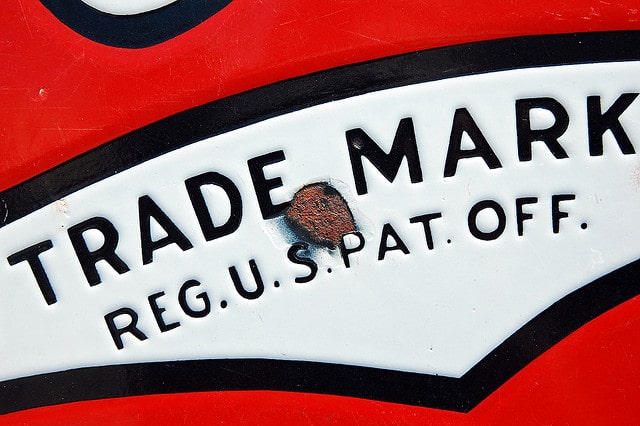Our legal team would like to offer a friendly reminder that the following should not be construed as legal advice.

1) Know the different categories of brand mark.
There are five brand mark types. Fanciful brand names, like Google, are the easiest kind to protect legally – a “coined” name (e.g., Verizon) is best from an ease-of-trademarking standpoint. Next-easiest are arbitrary trademarks, like Apple. Arbitrary marks use real words, but they do so in an unconventional way. Suggestive brand marks fall in the middle of the pack. Suggestive names, like Coppertone, hint at what the product in question provides but don’t state it outright. Descriptive marks, on the other hand, are less vague (and therefore tougher to trademark). Think Chap Stick. Finally, there are generic marks, which are impossible to trademark. (Try bringing “aspirin” to the U.S. Patent and Trademark Office for proof.)
2) Think about real-world use.
Ease of pronunciation is a key consideration when picking a brand name, particularly if you’re taking the “fanciful” route. It may also be good to employ stems from Greek or Latin, which can confer upon your brand a certain familiarity. And make Google Translate (or a real-life translator) your friend: you don’t want a mark that could be transliterated into something ridiculous.
3) Start the trademark-search process early.
Lisa counsels (pun unfortunately intended) that businesses begin searching for trademarks long before starting to use them commercially. Why? Quite simply, it’s good to cover your bases. Be proactive about making sure your target trademark isn’t in use already (and hasn’t been claimed on social channels like Facebook and Twitter). In addition, filing an intent-of-use application with the U.S.P.T.O. will position you well to defend your mark, should the need arise. When the mark registers, you will get presumptive nationwide trademark rights dating back to the day on which you filed.
4) Put yourself in consumers’ shoes.
The single most important question to ask when trademarking relates to consumer perception. With a trademark, is there a likelihood of consumers confusing your brand with another (existing) one? This question forms the basis of all trademark law, Lisa noted. So think about your desired trademark from the perspective of a disinterested consumer. If bewilderment is a distinct possibility, you should probably pursue a different mark.
Featured image courtesy of: Steve Snodgrass via photopin cc.
Originally published Dec 19, 2012, updated Apr 18, 2021



